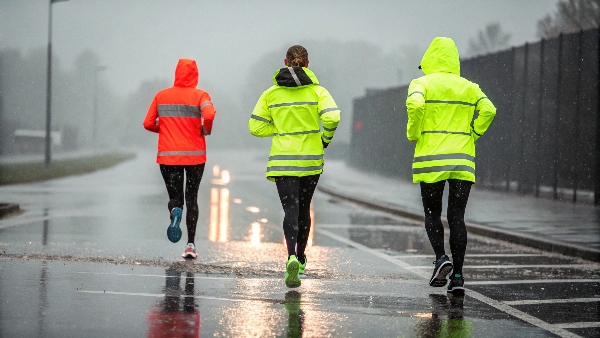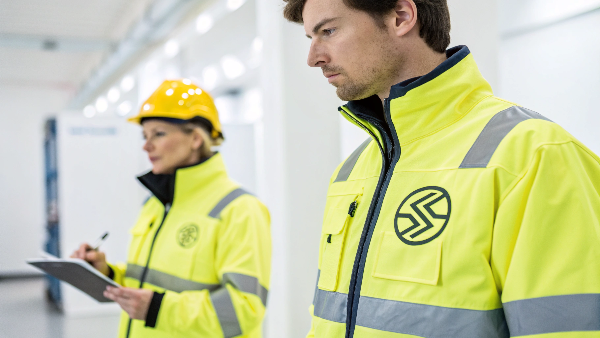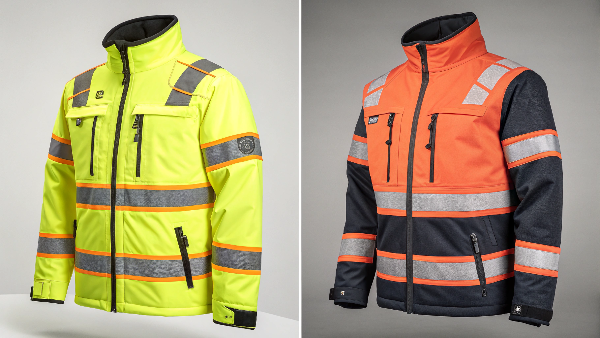Workplace accidents can cause terrible harm. Injuries often mean pain, lost wages, and big changes to life. Using the right safety equipment is a simple way to avoid many dangers.
Not wearing safety gear exposes workers to serious injuries like cuts, burns, impacts, chemical exposure, breathing problems, and even death. This leads to suffering, time off work, and significant costs for everyone involved.
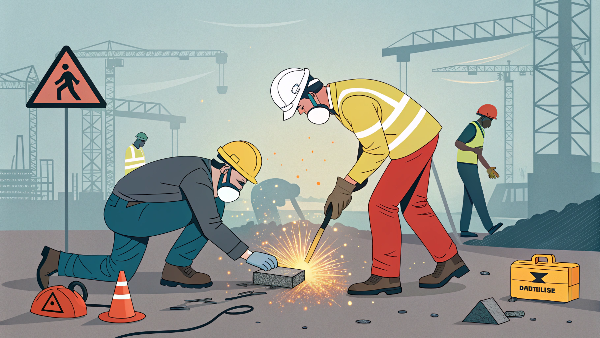
We all know safety gear is important, but understanding the specific risks makes it clear why we can never skip it. Let's look closer at why protecting yourself and your team is so vital and what happens when safety rules are ignored. We need to understand the full picture.
Why is it important to wear safety gear at work?
Accidents happen without warning on job sites. Ignoring safety can lead to terrible results, costing lives and money. Personal Protective Equipment (PPE)1 is your first defense against hazards.
Wearing safety gear is crucial. It shields employees from workplace dangers, lessens injury impact, ensures you follow the law, and promotes a safer environment. Ultimately, it saves lives and reduces costs.
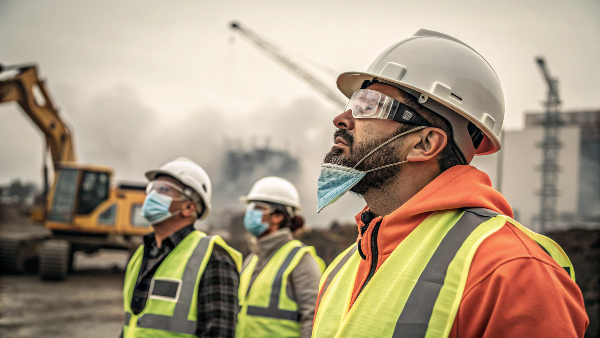
Wearing the right PPE is more than just following rules; it's a fundamental part of keeping people safe. As manufacturers of high-visibility clothing2 since 2007, we at Vissafety see firsthand how crucial proper gear is.
Reducing Risk Exposure
PPE acts as a barrier between the worker and potential hazards. Think about our high-visibility vests. For someone working near traffic or heavy machinery, like many clients Danny Cheng supplies in North America, being seen is critical. Our vests use materials meeting EN ISO 20471 or ANSI/ISEA 107 standards, making workers visible day and night. This drastically reduces the risk of being hit. Other PPE works similarly: hard hats block falling objects, safety glasses stop flying debris, and gloves protect hands from cuts or chemicals. It's about controlling exposure to known risks.
Meeting Legal Obligations
Governments worldwide have regulations requiring employers to provide and ensure the use of PPE. In the US, OSHA sets these rules; in Europe, similar bodies exist. Failing to comply leads to fines and legal trouble. Providing compliant gear, like our Vissafety apparel certified to international standards (ISO, OEKO-TEX), helps businesses meet these obligations. This protects the company and shows commitment to worker safety. Clients rely on us for gear that passes inspections and keeps their workforce legally protected.
Building a Safety Culture
When companies prioritize and provide good quality PPE, it sends a strong message. It shows they value their employees' well-being. This encourages workers to take safety seriously themselves, creating a positive safety culture3. Workers feel safer and more valued, which can improve morale and productivity. We often hear from partners that providing comfortable, well-designed PPE makes workers more likely to wear it consistently, further strengthening safety practices on site.
What are the disadvantages of not wearing PPE?
It might seem quicker to skip putting on PPE. But the potential damage from that choice is massive. Understanding the downsides helps everyone stick to safe work habits every time.
The biggest problems are higher chances of serious injury or long-term health issues4, facing legal fines, paying more for insurance, losing work time after accidents, and harming the company's image.
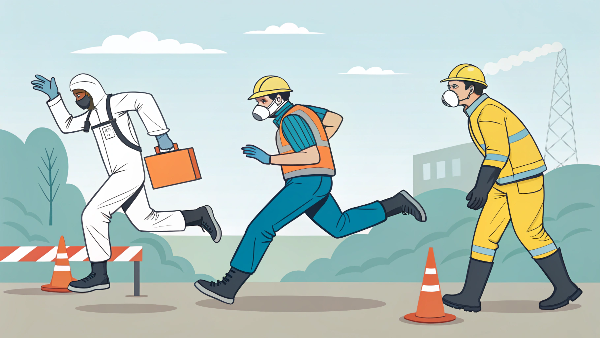
Ignoring PPE requirements isn't just risky for the individual worker; it creates problems for the entire business. We've seen the consequences play out, and they are always negative.
Direct Harm to Workers
This is the most obvious disadvantage. Without protection, workers are directly exposed to hazards. A falling tool can cause severe head trauma without a hard hat. Flying sparks can blind someone not wearing safety glasses. Handling chemicals without proper gloves can lead to severe burns or skin diseases. We make high-visibility clothing because being unseen by a driver is a direct path to severe injury or death for road crews or warehouse workers. These are not small risks; they are life-altering events that PPE is designed to prevent.
Financial Burdens
Accidents are expensive. Medical bills, compensation claims, and insurance premium hikes add up quickly. Fines from regulatory bodies like OSHA for non-compliance can be substantial. There's also the cost of lost productivity when an injured worker is absent, and potentially needing to hire and train temporary replacements. One of our long-term partners, Danny Cheng, learned this the hard way years ago (before working with us) when quality issues from another supplier led to major financial losses – poor quality PPE is almost as bad as no PPE. Reliable, compliant gear prevents these costs.
Operational Disruptions and Reputation Damage
A serious accident can halt work on a site, leading to project delays and potential contract penalties. Investigations take time and resources. Furthermore, a poor safety record damages a company's reputation. It becomes harder to attract skilled workers, and clients may choose competitors known for better safety practices. In today's world, safety performance is a key part of corporate responsibility and brand image. Neglecting PPE actively harms the business's standing.
What are the injuries due to lack of PPE?
Workplace hazards are real and varied. Ignoring the need for protection leads directly to pain and injury that could have been avoided. Knowing common injuries makes PPE's value clear.
Not having PPE can lead to cuts, punctures, skin damage, chemical burns5, eye injuries from debris or splashes, hearing loss6, breathing problems from dust or fumes, head injuries, broken bones, and accidents from poor visibility.
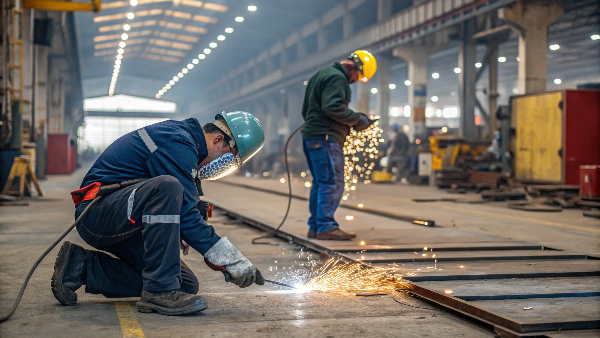
Different hazards target different parts of the body, which is why various types of PPE exist. We focus on visibility, but we understand the full range of risks workers face.
Impact and Penetration Injuries
These often affect the head, feet, and hands.
- Head: Falling objects, bumping into structures. Prevented by hard hats.
- Feet: Dropped heavy items, sharp objects on the ground (nails). Prevented by safety boots with reinforced toes and soles.
- Hands: Sharp edges, tools slipping, pinch points. Prevented by various types of protective gloves (cut-resistant, impact-resistant).
Exposure Injuries (Chemical, Thermal, Biological, Radiation, Noise)
These injuries result from contact with harmful substances or energy.
- Eyes/Face: Chemical splashes, welding arcs, flying particles. Prevented by safety glasses, goggles, face shields.
- Skin: Corrosive chemicals, extreme heat/cold, biological agents. Prevented by gloves, aprons, coveralls made of specific resistant materials.
- Respiratory: Dust, toxic fumes, lack of oxygen. Prevented by dust masks, respirators with appropriate filters, or supplied air systems.
- Hearing: Prolonged exposure to loud noise. Prevented by earplugs or earmuffs.
Visibility-Related Accidents
This is a critical area, especially for outdoor and infrastructure workers.
- Struck-by Incidents: Workers hit by vehicles or moving equipment, particularly in low light, bad weather, or complex sites. Prevented by high-visibility clothing (vests, jackets, trousers) that meets standards like ANSI/ISEA 107 or EN ISO 20471. Our Vissafety gear uses certified fluorescent and reflective materials to ensure workers are seen clearly by drivers and operators, significantly reducing this major risk.
Understanding these specific injury types helps select the right PPE for each task.
| Hazard Type | Common PPE | Injury Prevented |
|---|---|---|
| Falling Objects | Hard Hat | Head Trauma, Skull Fracture |
| Sharp Edges/Objects | Cut-Resistant Gloves, Safety Boots | Cuts, Punctures |
| Chemical Splash | Goggles, Face Shield, Gloves | Eye Damage, Skin Burns |
| Airborne Dust/Fumes | Respirator, Mask | Lung Disease, Respiratory Illness |
| Loud Noise | Earplugs, Earmuffs | Hearing Loss |
| Low Visibility | High-Visibility Clothing | Struck-by Accidents, Vehicle Collisions |
What are the OSHA rules for PPE?
Safety regulations can seem complicated. But ignoring rules from bodies like OSHA brings serious problems. Knowing the basic requirements makes managing safety much easier for employers.
OSHA mandates that employers must assess hazards, provide necessary PPE free of charge, train workers on its use and care, ensure it fits properly, and confirm it's used correctly whenever needed.

Meeting OSHA requirements (or similar rules in other regions) is a fundamental duty for employers. It's about creating a systematically safe workplace. As a supplier, we help our clients meet these rules by providing compliant gear.
Employer Responsibilities under OSHA
OSHA's rules place the main responsibility on the employer. Key duties include:
- Perform a Hazard Assessment7: Identify potential dangers in the workplace that require PPE.
- Select and Provide Appropriate PPE: Choose the right type of PPE for the identified hazards and provide it to employees at no cost. This includes ensuring the PPE meets specific standards (like ANSI for eye protection or headwear, or ANSI/ISEA 1078 for high-visibility apparel in the US).
- Train Employees: Teach workers when PPE is necessary, what kind is needed, how to put it on, adjust it, wear it, take it off, and how to properly care for and maintain it, including its limitations.
- Ensure Proper Use and Maintenance: Employers must make sure PPE is kept clean, reliable, and replaced when worn out or damaged. They also need to ensure employees actually use it.
Key Elements of an OSHA-Compliant PPE Program
A good PPE program, which OSHA expects, usually involves written documentation covering:
- Hazard assessment results.
- PPE selection criteria.
- Training procedures and records.
- Maintenance and inspection schedules.
- Procedures for enforcing PPE use.
Having a formal program helps ensure consistency and compliance.
Ensuring PPE Meets Standards
OSHA often references specific consensus standards (like ANSI or ASTM) that PPE9 must meet. For high-visibility clothing needed in the US, compliance with ANSI/ISEA 107 is typically required. At Vissafety, we ensure our products designed for the North American market meet this standard, verified through testing in our own advanced lab and by third parties. This gives our clients, like Danny Cheng supplying construction and logistics sectors, confidence that the gear they purchase fulfills legal requirements and genuinely protects their workers.
In what circumstances is it necessary to wear PPE?
Knowing exactly when to use safety gear can sometimes be confusing. Guessing incorrectly puts people directly in danger. Identifying specific high-risk situations makes the need for PPE clear.
PPE is required whenever workplace hazards cannot be adequately controlled through other means like engineering changes (e.g., machine guards) or administrative rules (e.g., safe work procedures). This applies during exposure to various risks.
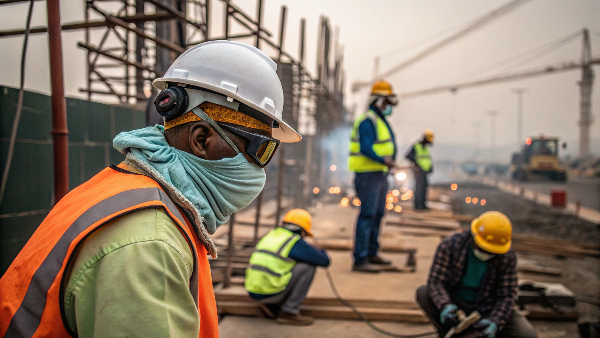
The decision to use PPE isn't random; it follows a logical process based on risk assessment and the hierarchy of controls.
Assessing the Need Through Hazard Analysis
The first step is always to identify potential dangers in a specific job or work area. This involves looking at the tasks, the environment, and the materials being used. Questions to ask include:
- Are there moving objects or vehicles?
- Is there a risk of falling objects?
- Are sharp tools or materials handled?
- Are hazardous chemicals present?
- Is there loud noise?
- Is visibility poor (night work, fog, complex sites)?
- Are there temperature extremes?
If the answer to any of these is yes, and the risk can't be eliminated otherwise, PPE is likely needed.
Common Scenarios Requiring PPE
Based on hazard analysis, here are typical situations where PPE becomes essential:
- Construction Sites: Hard hats, safety glasses, high-visibility vests, steel-toed boots, gloves are standard due to falling debris, dust, noise, heavy equipment, and trip hazards.
- Road Work/Traffic Control: High-visibility clothing (ANSI Class 2 or 3) is critical day and night. Hard hats and safety shoes may also be needed.
- Welding/Metalwork: Welding helmets, fire-resistant clothing, gloves, respirators protect against sparks, intense light, fumes, and heat.
- Handling Chemicals: Chemical-resistant gloves, goggles or face shields, aprons, and sometimes respirators are necessary depending on the substance's toxicity and splash potential.
- Working in Noisy Environments: Earplugs or earmuffs are required when noise levels exceed OSHA limits (typically 85 dBA average over 8 hours).
- Warehouses/Logistics: High-visibility vests help prevent collisions with forklifts. Safety shoes protect feet from falling items or rolling equipment.
The Hierarchy of Controls
It's important to remember PPE is considered the last line of defense. The preferred order to control hazards is:
- Elimination: Remove the hazard completely.
- Substitution: Replace the hazard with something safer.
- Engineering Controls: Isolate people from the hazard (e.g., machine guards, ventilation systems).
- Administrative Controls: Change the way people work (e.g., safety procedures, training, warning signs).
- PPE: Protect the worker with personal barriers.
PPE is necessary when the first four levels cannot reduce the risk enough.
What if an employee refuses to wear PPE?
Sometimes, workers might resist wearing required safety gear. This puts not only them but also their colleagues at risk. Employers must have a clear and fair way to handle this situation.
If an employee refuses PPE, investigate why (fit, comfort, training gaps), retrain them, address valid concerns (e.g., offer different sizes/styles if possible), explain risks and rules, and follow company disciplinary policy if refusal continues.

Dealing with PPE refusal requires understanding, communication, and consistency. Ignoring it is not an option, as it undermines safety culture and creates liability.
Understanding the Refusal
The first step is to talk to the employee privately and find out why they are refusing. Common reasons include:
- Discomfort or Poor Fit: The PPE might be too tight, too loose, too hot, or generally uncomfortable.
- Interference with Work: They might feel the PPE makes it harder to do their job effectively.
- Lack of Understanding: They might not fully understand the risks or why the PPE is necessary.
- Forgetfulness or Complacency: Sometimes it's just habit or feeling like "it won't happen to me."
- Medical Reasons: In rare cases, a medical condition might make wearing certain PPE difficult.
Steps for Employers to Take
Once the reason is understood, employers should:
- Re-train: Reinforce the importance of the PPE, the specific hazards it protects against, and how to wear it correctly. Document this training.
- Address Concerns: If fit or comfort is the issue, try to find alternative sizes or styles that still meet the required protection standards. As manufacturers, we know comfort improves compliance, which is why Vissafety offers customization options. If it interferes with work, assess if work procedures can be adjusted slightly without compromising safety. Address medical issues appropriately, potentially seeking medical advice.
- Explain Consequences: Clearly communicate the risks of not wearing the PPE and the company's policy regarding mandatory safety rules, including potential disciplinary actions.
- Document Everything: Keep records of the conversations, retraining efforts, solutions offered, and the employee's responses.
- Enforce Policy: If the refusal persists without a valid reason that can be accommodated, follow the established disciplinary procedure consistently and fairly. This might range from verbal warnings to termination, depending on the policy and severity.
Legal and Safety Implications
Employers have a legal duty to provide a safe workplace, which includes enforcing PPE use. Allowing employees to opt-out creates significant liability if an accident occurs. It also sends a negative message to other employees, potentially weakening the overall safety culture. Consistent enforcement is key.
What happens if PPE is not provided?
Some employers might try to save money by not supplying required safety gear. This failure to protect workers leads to very serious outcomes for the business and its people.
If required PPE is not provided, employers face OSHA fines, a higher chance of worker injuries or deaths, potential lawsuits, increased insurance costs, operational disruptions, and severe damage to their business reputation.
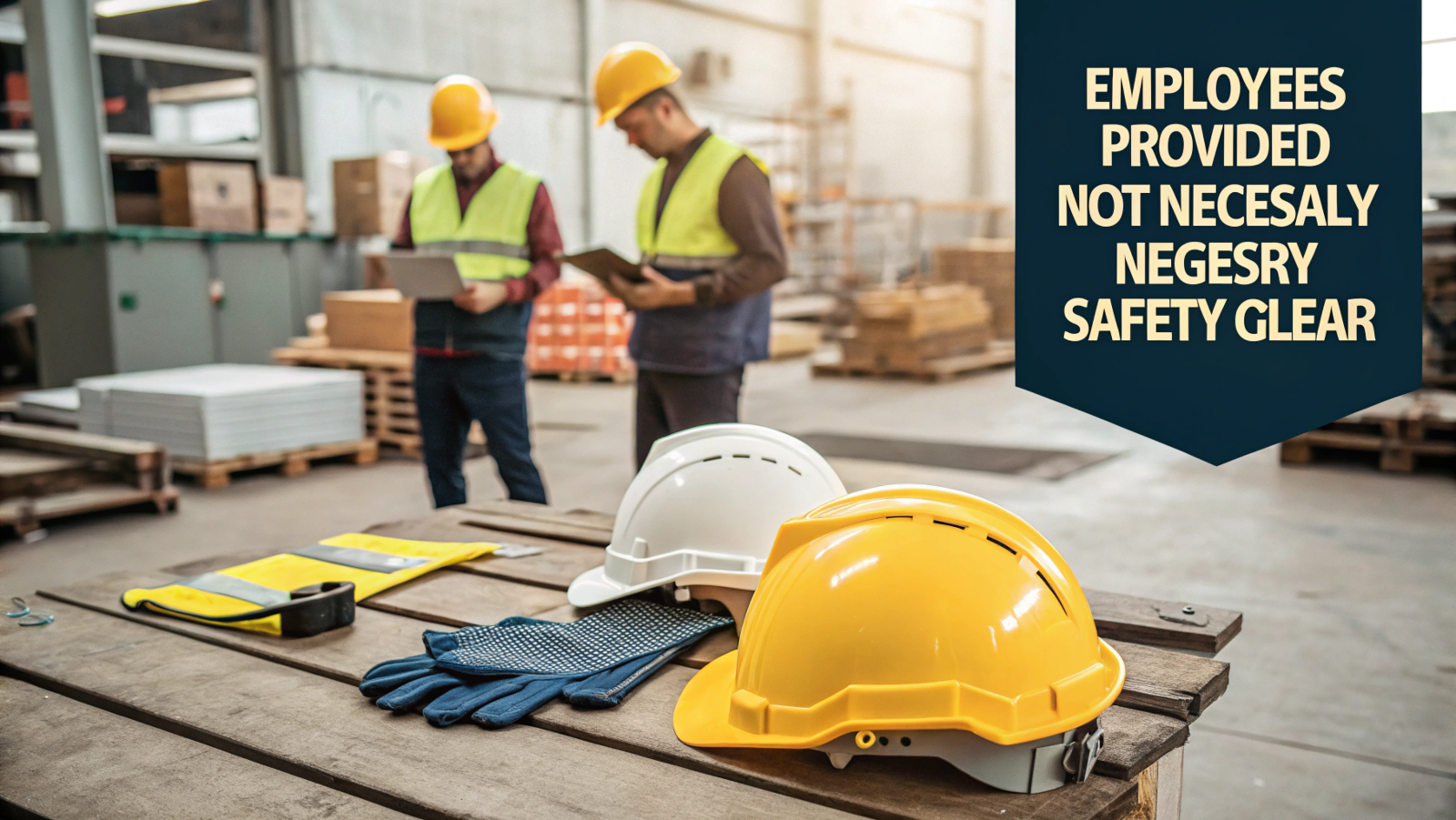
Failing to provide necessary PPE is a major violation of employer responsibilities. The consequences go far beyond just potential fines; they impact the entire business operation and its future.
Regulatory Penalties (OSHA)
OSHA (and similar agencies globally) can issue citations and significant fines for failing to provide or ensure the use of required PPE. Penalties depend on the severity of the violation (Serious, Willful, Repeat) and can range from thousands to hundreds of thousands of dollars. Inspections can be triggered by accidents, employee complaints, or programmed inspections in high-hazard industries. We ensure Vissafety products meet relevant standards, helping our clients avoid these compliance-related penalties.
Civil Liability and Lawsuits
If a worker is injured due to lack of required PPE, the employer can be sued for negligence. Workers' compensation might cover some costs, but serious injuries can lead to additional lawsuits seeking damages for pain and suffering, lost future earnings, and punitive damages, especially if the employer knowingly disregarded safety rules. These lawsuits can be financially crippling.
Business Impact (Costs, Reputation, Morale)
Beyond fines and lawsuits, the costs mount. Workers' compensation insurance premiums will likely skyrocket after preventable injuries. Accidents cause work stoppages, project delays, and lost productivity. Perhaps most importantly, failing to provide basic safety equipment destroys employee morale and trust. Workers will feel undervalued and unsafe, leading to higher turnover rates and difficulty attracting new talent. The company's reputation among clients, partners, and the public can be permanently damaged, making it harder to win contracts or maintain business relationships. Providing quality, reliable PPE is an investment, not just an expense – it protects the workforce and the business itself.
Conclusion
Wearing the right safety gear isn't optional; it's essential. It protects workers from harm, ensures legal compliance, and supports a productive, trustworthy business. Always make safety the top priority on every job.
-
Understanding PPE is essential for workplace safety. This resource will provide comprehensive insights into its importance and usage. ↩
-
Explore the advantages of high-visibility clothing to enhance safety in hazardous work environments, ensuring better protection for workers. ↩
-
Learn effective strategies for fostering a safety culture that prioritizes employee well-being and enhances overall workplace safety. ↩
-
Understanding the risks of serious injuries can help emphasize the importance of PPE in the workplace. ↩
-
Understanding the effects of chemical burns can help in selecting appropriate PPE and safety measures to prevent such injuries. ↩
-
Exploring prevention methods for hearing loss can enhance workplace safety and ensure long-term employee health. ↩
-
A thorough hazard assessment is essential for selecting appropriate PPE. Discover best practices to enhance workplace safety. ↩
-
Learn about ANSI/ISEA 107 standards to ensure your high-visibility apparel meets safety regulations and protects workers effectively. ↩
-
Understanding OSHA's PPE requirements is crucial for workplace safety and compliance. Explore this link to ensure your knowledge is up-to-date. ↩

